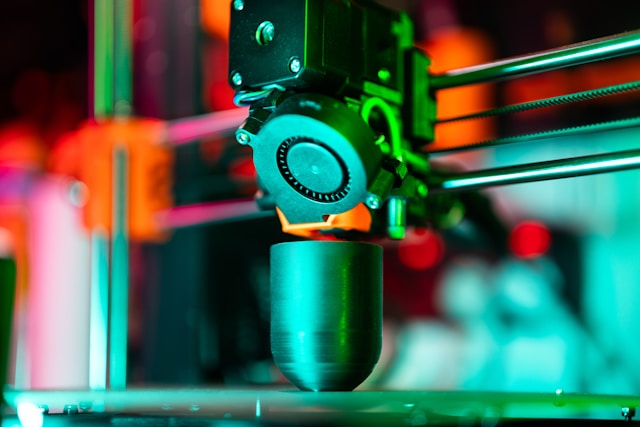
Modern manufacturing has undergone a transformation more dramatic than at any point in history. Thanks to breakthroughs in automation, artificial intelligence (AI), robotics, and data analytics, the manufacturing industry is becoming faster, smarter, and more efficient. This shift—often referred to as Industry 4.0—is redefining how products are designed, produced, and distributed. Below, we explore the technologies driving this change, their benefits, challenges, and what the future may hold.
1. The Evolution of Manufacturing Technology
Manufacturing technology has evolved through several distinct phases, from the steam-powered first industrial revolution to today’s intelligent automation. In the early days, production relied heavily on manual labor and basic tools. Then came electricity and assembly lines, drastically increasing output and lowering costs.
The third industrial revolution introduced computers and automation into factories, allowing for precision and control. Now, the fourth industrial revolution—Industry 4.0—integrates digital technologies such as the Internet of Things (IoT), AI, and machine learning into manufacturing systems.
Key hallmarks of this evolution include:
- Smart Factories: Facilities where machines, sensors, and humans interact in real-time.
- Cyber-Physical Systems: Integration of physical processes with computational elements.
- Data-Driven Decision Making: Use of analytics to optimize everything from inventory to production speed.
The result is a manufacturing environment that is not only more efficient but also highly adaptive and customer-focused.
2. Cutting-Edge Technologies Transforming the Industry
Several core technologies are driving this revolution, each bringing unique capabilities to the table:
1. Automation and Robotics
Automation reduces the need for human intervention, improving consistency and minimizing errors. Advanced robotics now handle tasks from simple assembly to intricate surgical-like precision work, thanks to developments in sensors and AI-powered controls.
2. Artificial Intelligence and Machine Learning
AI allows machines to learn from data and adapt their behavior accordingly. In manufacturing, this translates to predictive maintenance (where systems alert users before machines fail), quality control, and production optimization. Machine learning models analyze vast amounts of operational data to identify patterns and make real-time decisions.
3. Internet of Things (IoT)
IoT enables connected devices on the factory floor to communicate and share data. This connectivity provides end-to-end visibility across the supply chain and ensures smoother, more informed operations.
4. 3D Printing (Additive Manufacturing)
3D printing allows for the rapid creation of prototypes and final parts with complex geometries. This not only accelerates development cycles but also opens the door to mass customization—producing unique items at scale.
5. Digital Twins
A digital twin is a virtual replica of a physical system, used to simulate, monitor, and optimize processes. Manufacturers use digital twins to test different scenarios, reduce downtime, and improve system efficiency before implementing physical changes.
3. Benefits of Adopting Modern Manufacturing Technologies
The adoption of modern manufacturing technologies yields numerous benefits for both companies and consumers:
1. Enhanced Productivity and Efficiency
Automation and AI streamline operations, reduce downtime, and optimize workflows. This leads to increased output and reduced operating costs.
2. Improved Quality and Precision
Digital tools enable tighter quality control. With real-time monitoring and feedback, defects can be detected and corrected earlier in the process, ensuring higher-quality products.
3. Greater Flexibility
Smart systems can quickly adapt to changes in product design or market demand. This agility enables manufacturers to respond to customer needs faster than ever before.
4. Reduced Waste and Environmental Impact
Technologies such as predictive maintenance and precision manufacturing reduce resource consumption and energy use. Furthermore, smart factories are increasingly implementing green practices, supporting sustainability goals.
5. Better Supply Chain Visibility
With IoT and data analytics, manufacturers gain real-time insight into their entire supply chain, improving logistics, inventory management, and customer satisfaction.
4. Challenges and the Road Ahead
Despite its many benefits, the integration of manufacturing technology comes with challenges that businesses must navigate carefully.
1. High Upfront Costs
Implementing advanced systems and machinery requires significant capital investment. Small and medium-sized enterprises (SMEs), in particular, may find it difficult to afford these technologies.
2. Skill Gaps
New technologies demand a skilled workforce capable of managing and maintaining sophisticated systems. This need has created a talent gap, pushing companies to invest in training and upskilling programs.
3. Cybersecurity Risks
As factories become more connected, they also become more vulnerable to cyberattacks. Protecting critical data and infrastructure requires robust cybersecurity strategies.
4. Integration Complexities
Introducing new technologies into legacy systems can lead to compatibility issues and operational disruptions. Businesses must plan carefully and work with experienced partners to ensure smooth transitions.
5. Regulatory Compliance
As technology evolves, so too does the regulatory environment. Companies must stay informed about local and international standards related to safety, data privacy, and environmental impact.
Manufacturing technology is at a crossroads, offering tremendous potential for innovation and growth. Those who embrace the changes—by investing in cutting-edge tools, building a skilled workforce, and navigating integration thoughtfully—will be well-positioned for the future.
Industry 4.0 is not just about machines; it’s about rethinking how manufacturing works at every level. From AI-powered analytics to smart robots and beyond, this digital transformation is making manufacturing smarter, faster, and more sustainable.
As this technology continues to evolve, manufacturers who adapt quickly will be the ones setting tomorrow’s standards—delivering higher-quality products, meeting changing customer demands, and driving a new era of industrial excellence.